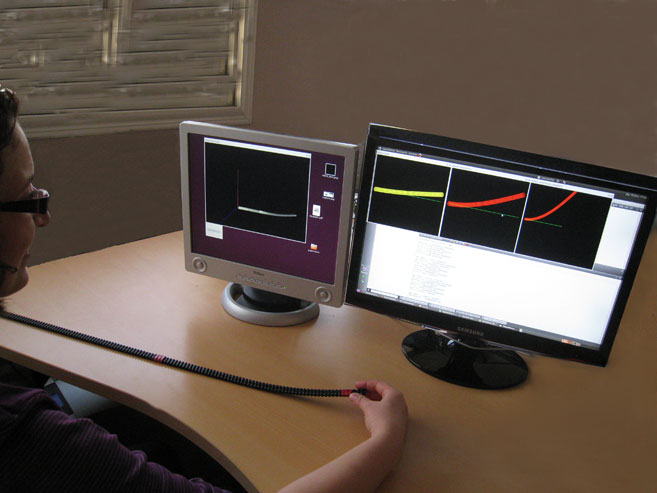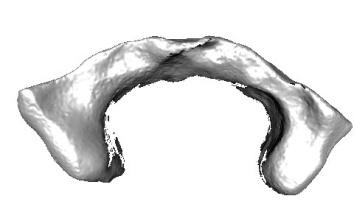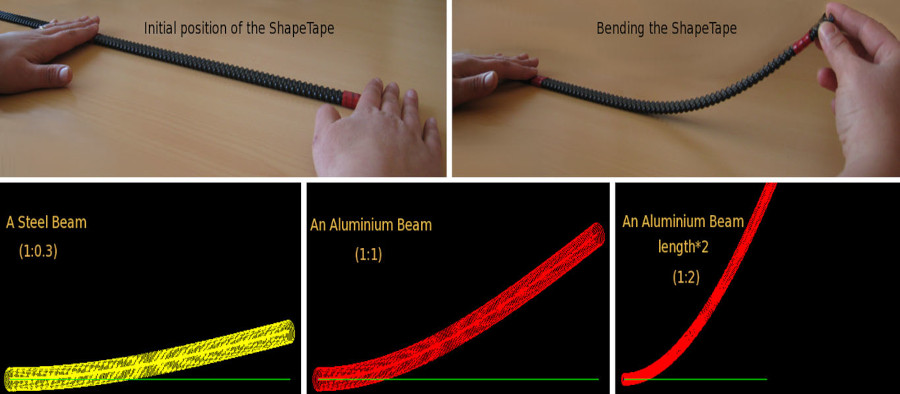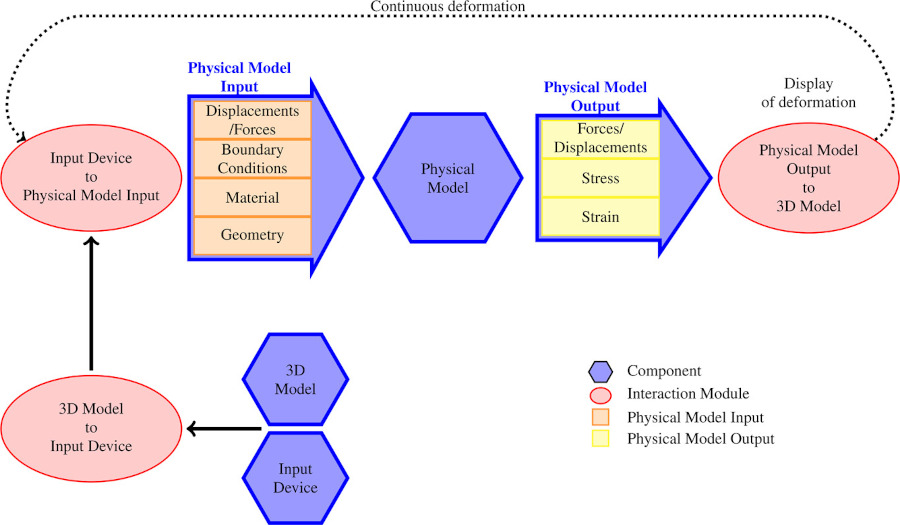Synopsis
ArcheoTWIST (ArcheoTUI ShapeTape) is een tastbare interface die een mechanische solver integreert voor het simuleren van fysisch-gebaseerde vervormingen om hypotheses op het gebied van Archeologie te valideren. Het doel is om archeologen intuïtieve hulpmiddelen te bieden om de geleden vervormingen van verworven virtuele 3D-objecten te bestuderen door er krachten op uit te oefenen. Archeologen kunnen zo interactief vervormingshypotheses valideren of verwerpen. De handmatige manipulatie van een fysieke tape stelt archeologen in staat om de chronologie van de verschillende vervormingen van archeologische vondsten beter te begrijpen en zo hun oorspronkelijke vormen terug te vinden. Het eerste prototype richtte zich op de manipulatie en vervorming van nietjes ontdekt op een archeologische vindplaats in Alexandrië in Egypte.
Referentiepublicatie:
[2] Takouachet, N., Couture, N., Reuter, P., Joyot, P., Rivière, G., Verdon, N., "Tangible user interfaces for physically-based deformation: design principles and first prototype", In Visual Computer, Springer Verlag, vol. Volume 28, no. 6-8, pp. 799-808, 2012.
Website: anr-search.labri.fr
Foto's




Publicaties
2 results| 2012 | |
| [2] | Takouachet, N., Couture, N., Reuter, P., Joyot, P., Rivière, G., Verdon, N., "Tangible user interfaces for physically-based deformation: design principles and first prototype", In The Visual Computer, Springer Verlag, vol. Volume 28, no. 6-8, pp. 799-808, From the issue entitled ''CGI'2012 Conference'', 2012.
|
| 2011 | |
| [1] | Takouachet, N., Couture, N., Verdon, N., Joyot, P., Reuter, P., Rivière, G., "Two-handed Tangible Interaction for Physically-based 3D Deformation", In Journées de l'Association française de Réalité Virtuelle, Augmentée, Mixte et d'Interaction 3D (AFRV), Bidart, France, pp. 53-58, 6 pages, 2011.
<hal-00647221> <PDF> |
